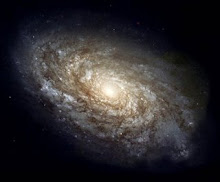A: Vestigial organs are often used as evidence to argue in favor of Darwinian evolution. These organs are allegedly left over from our ancestors but are no longer useful or needed. Evolution proponents typically contend that such structures are best explained as remnants of evolutionary history. Supposedly, the best explanation for these non-functional traits is that they once served a purpose in our ancestor but now no longer do.
In a recent article for New Scientist, Laura Spinney discusses five vestigial organs in the human body and refers to them as “useless relics of our evolutionary past.” Five organs that humans no longer need are provided to counter the claims of creationists who supposedly deny that vestigial organs exist at all.
Before addressing the specific organs that are covered in her article, it is necessary to clarify how creationists should view vestigial organs. The classic definition of a vestigial organ is an organ or structure in an organism that is not functional, but is derived from an ancestor that had a use for that organ or structure. Creationists understand that there has been degeneration and mutation since the Fall. We also expect that there would be a significant loss of information for many genes. The loss of genes for organs that do not significantly impact survival in a negative way could be quite prevalent. Thus, for the creationist, there should be no problem with an organ or structure in man that has lost some functionality. However, another possibility is that we have just not determined or understood the function properly yet.
Creationists do not deny that there are organs in man that have lost some of their functionality. However, they do reject the notion that those organs were inherited from a common ancestor with apes or other animals. Evolutionists typically point to these presumed non-functioning organs and insist that they are evidence that we evolved from a common ancestor with more primitive organisms. Just because humans have organs with reduced functionality does not really count as evidence of common ancestry. This is perhaps because God created Adam and Eve with those organs, but they have lost some functionality in their descendants.
To read a response to all five supposedly vestigial organs, including goosebumps and the tailbone, see Setting the Record Straight on Vestigial Organs.
News to Note Quick Look
Boxed in: A new study of Idaho’s Box Canyon suggests the canyon was formed by “a megaflood—a catastrophic outpouring of massive amounts of water in a relatively short period.” Read more.
Pterosaur Rex: Mighty pterosaurs may have landed and strolled about on land when it was time to dine, reports LiveScience on a study published in PLoS ONE. Read more.
Also: overcoming racism, born alive and old, and converging plants. Read more.
New Questions. New Answers.
People complain about The New Answers Book. They say that it’s so good at giving short, substantive answers that they want more. Well, we listened! In The New Answers Book 2 you’ll find 31 more great answers to big questions for the Christian life. Many view the original New Answers Book as an essential tool for modern discipleship. Both of these books answer such questions as: Can natural processes explain the origin of life? Can creationists be real scientists? Where did Cain get his wife? Is evolution a religion? and more!
Featuring 20 authors such as Ken Ham (who also served as general editor), Dr. David Menton, Dr. Georgia Purdom, Dr. Tommy Mitchell, Dr. Jason Lisle, Dr. Terry Mortenson, Dr. Monty White, and Paul Taylor, The New Answers Book 2 is designed to give lay Christians answers to false worldviews such as evolution and millions of years that pervade today’s culture!
Find out more!
This information was provided by Answers In Genesis, an excellent source of material relating to Creation and evolution. Please visit their website using the link in the upper left.
Subscribe to:
Post Comments (Atom)

No comments:
Post a Comment